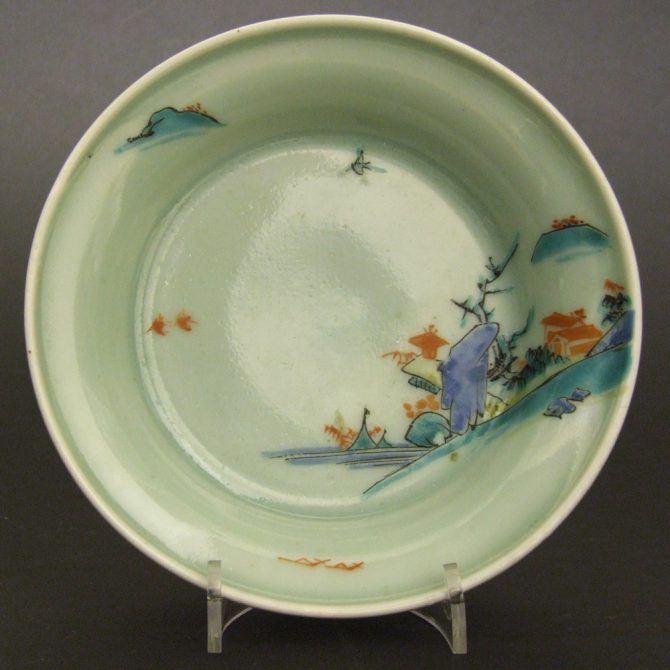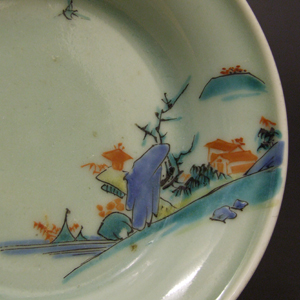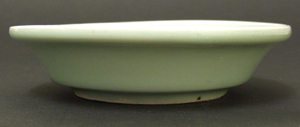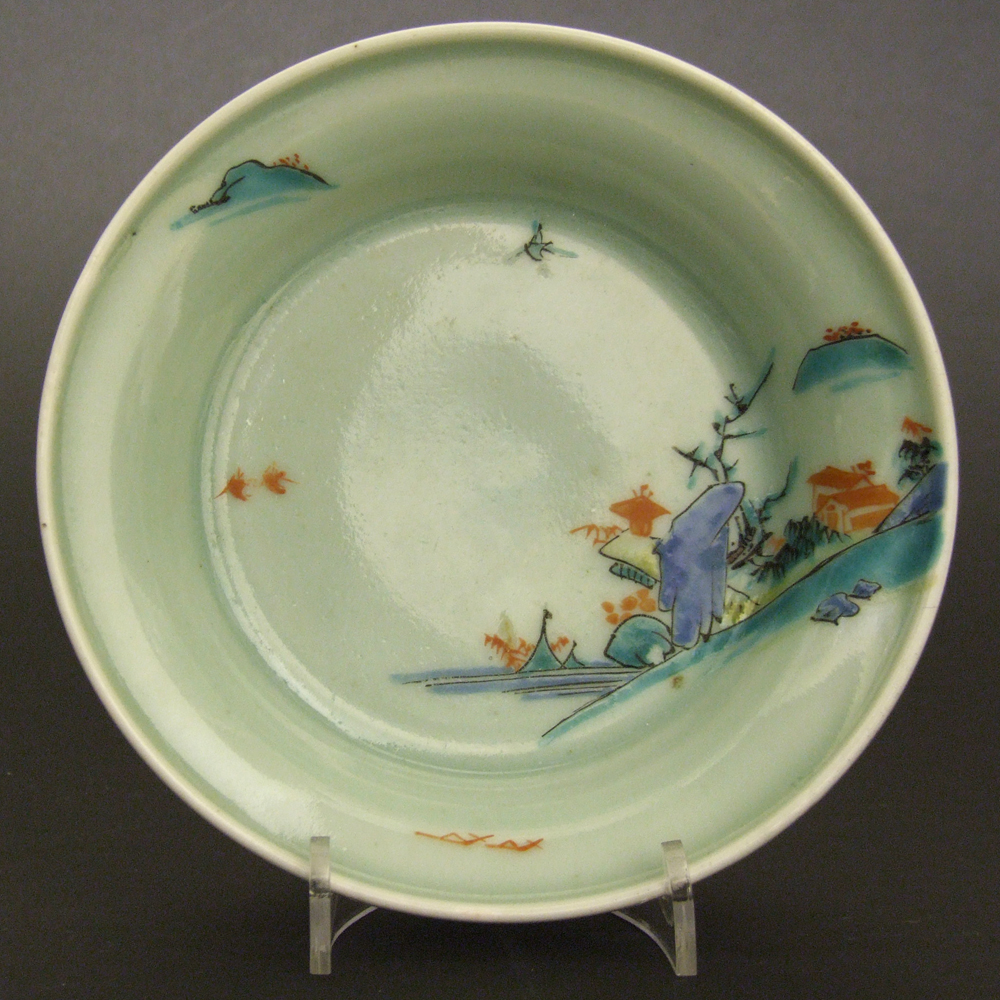
KAKIEMON c.1690 – 1710 Japanese Porcelain
A Rare Japanese Celadon Ground Kakiemon Porcelain Dish c.1690-1710. The Thickly Potted Dish is Decorated with a Sparse Asymmetric Landscape Painted in an Angular Semi-Abstract Style. The Scene Depicts Small Huts Nestling Among Rocks and Trees on the Right Overlooking a Stretch of Water with Tiny Boats in the Foreground and Rocks to the Left.
SOLD
- Condition
- No damage, however there is a firing fault to the reverse. This consists of a glaze crack which is mostly covered with glaze.
- Size
- Diameter : 14.3 cm (5 2/3 inches)
- Provenance
- N/A
- Stock number
- 23358
- References
- For two celadon ground Kakiemon porcelain dishes of this type see : The Commemorative Exhibition For The Contribution, The Shibatas Collection Part 2, Volume 1 (Akihiko Shibata and Yuko Shibata and others, The Kyushu Ceramic Museum, 1991) page 169, plates 433 and 434.
Information
Kakiemon Porcelain :
Sakaida Kakiemon (1596-1666) is popularly credited with being one of the first in Japan to discover enamel decoration on porcelain, known as Akae or persimmon red, it is said to have been developed by the potter Sakaida Kakiemon from 1643. The name `Kakiemon` was bestowed on Sakaida by his overlord, the development of this distinctive palette of soft red, yellow, blue and turquoise green with the use of black for outlines and shading typifies Kakiemon porcelain. Kakiemon is sometimes used as a generic term describing wares made in the Arita factories using the characteristic Kakiemon overglaze enamels and decorative styles. However, Kakiemon porcelain is supposed to have been produced by direct descendants of kakiemon, now Sakaida Kakiemon XIV (1934-). Shards from the Kakiemon kiln site at Nangawara show that blue and white as well as celadon wares were also produced. Kakiemon decoration is usually of high quality, often delicate and with well-balanced asymmetric designs. The designs were normally quite sparse emphasizing the fine white porcelain body known in Japan as Nigoshide (milky white). The opaque white milky Nigoshide body was used on the finest pieces, it appears that it was reserved for fine quality enamelled decoration. Kakiemon porcelain was decorated with a great variety of imaginative designs which include elements such as the `banded hedge`, `flying squirrel`, and the `Quail and Millet` design. The `Three Friends of Winter` were also a very popular group of designs, other subject taken from nature include flowers (especially the chrysanthemum, the national flower of Japan) as well as birds and rockwork. Figural subjects such as the `Hob in the Well` were also popular. This design illustrates a Chinese folk tale where a sage saves his friend who has fallen into a large fishbowl by throwing stones at it, braking open the pot. Banded-Hedges were a formal device within Japanese traditional gardens, they were often incorporated in designs, includes `The Three Friends of Winter` (Pine, Bamboo and Prunus). These three plants signify perseverance, as neither the pine nor the bamboo shed their leaves in winter and the plumb (Prunus) flowers at the very end of the winter, heralding the arrival of spring.


